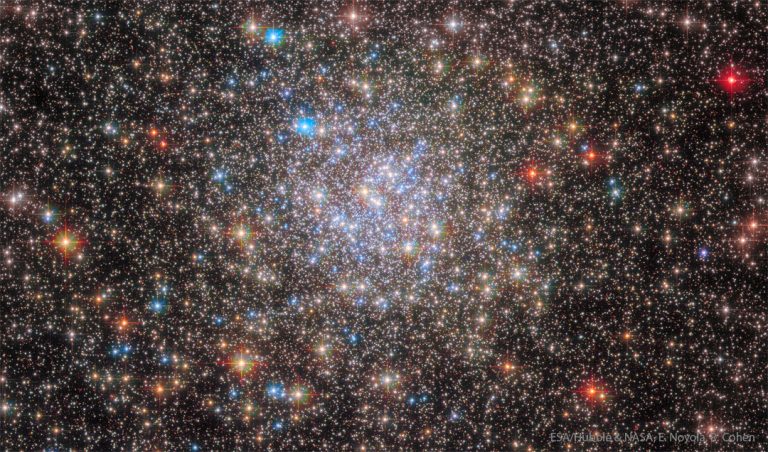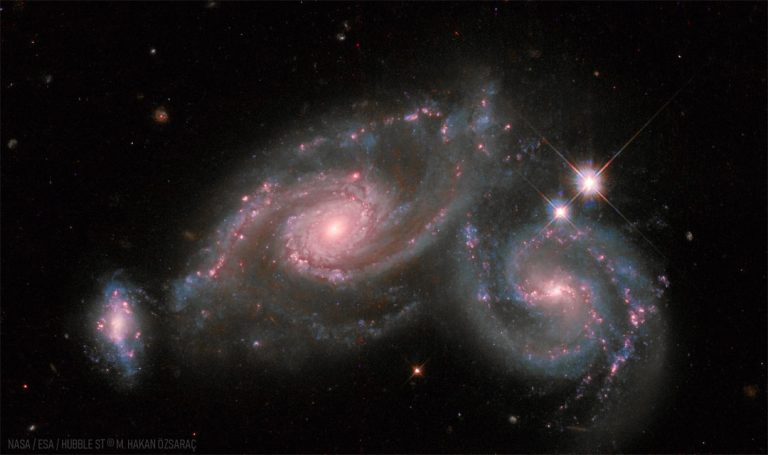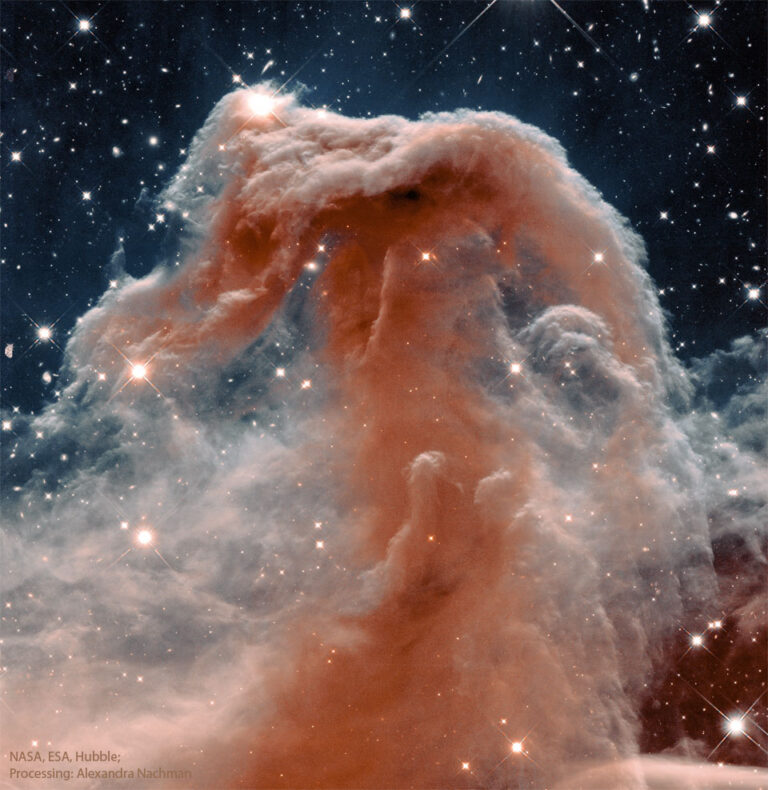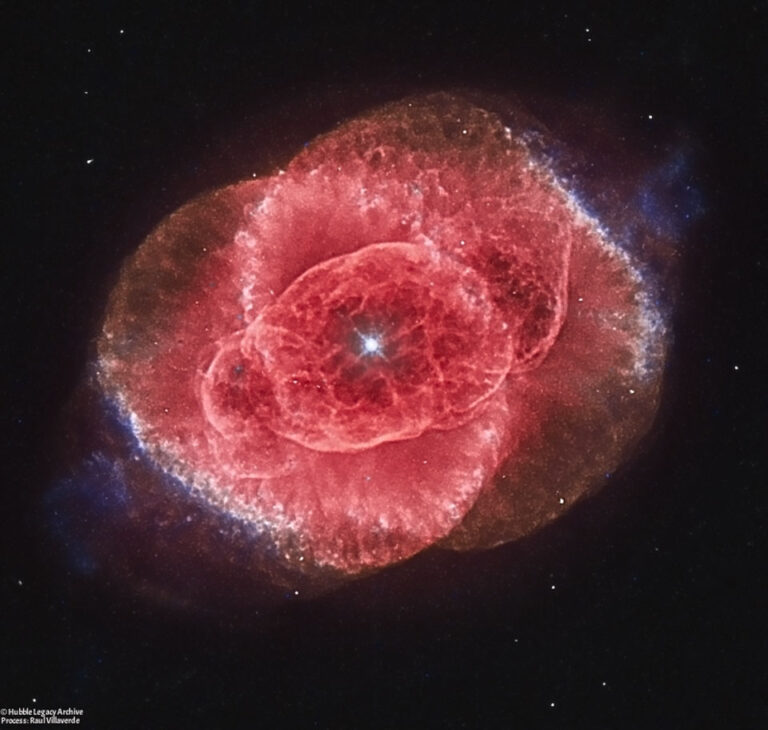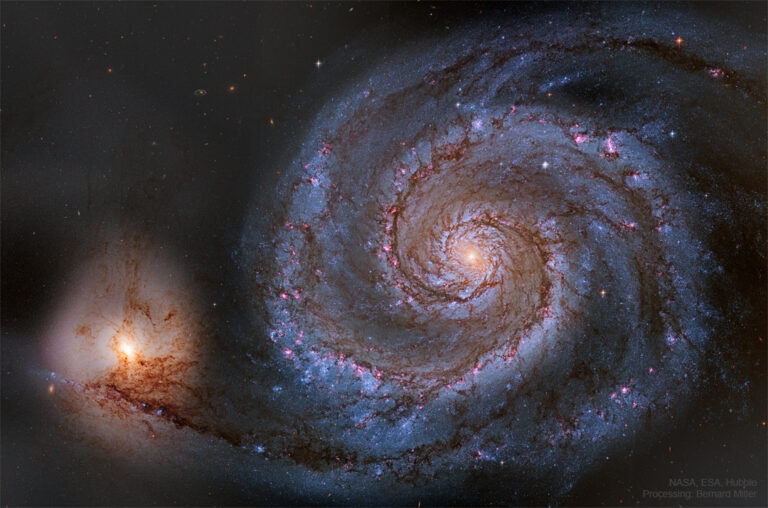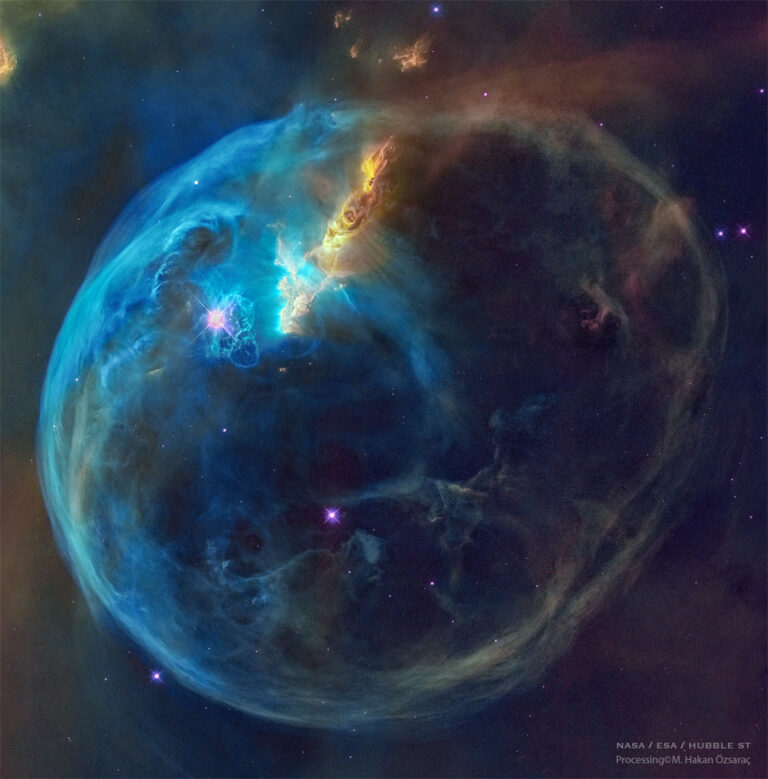哈勃图像: 球状星团NGC 6355
2023年1月30日 Globular Star Cluster NGC 6355 from Hubble Image Credit: ESA/Hubble & NASA, E. Noyola, R. Cohen Explanation: Globular clusters once ruled the Milky Way. Back in the old days, back when our Galaxy first formed, perhaps thousands of globular clusters roamed our Galaxy. Today, there are less than 200 left. Over the eons, many globular clusters were destroyed by repeated fateful encounters with each other or the Galactic center. Surviving relics are older than any Earth fossil, older than any other structures in our Galaxy, and limit the universe itself in raw age. There are few, if any, young globular clusters left in our Milky Way Galaxy because conditions are not ripe for more to form. The featured image shows a Hubble Space Telescope…

